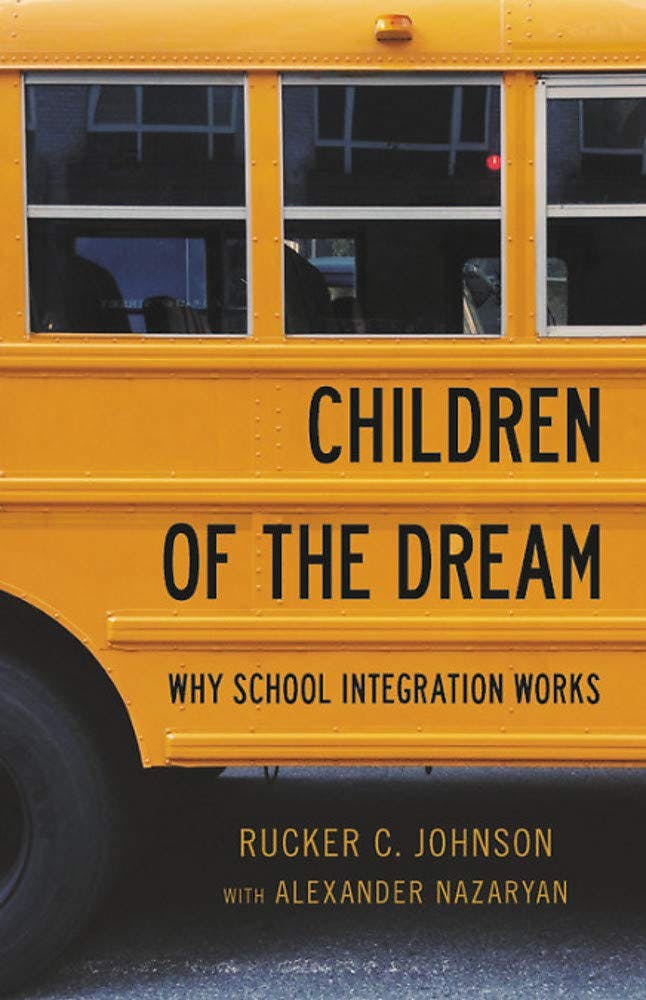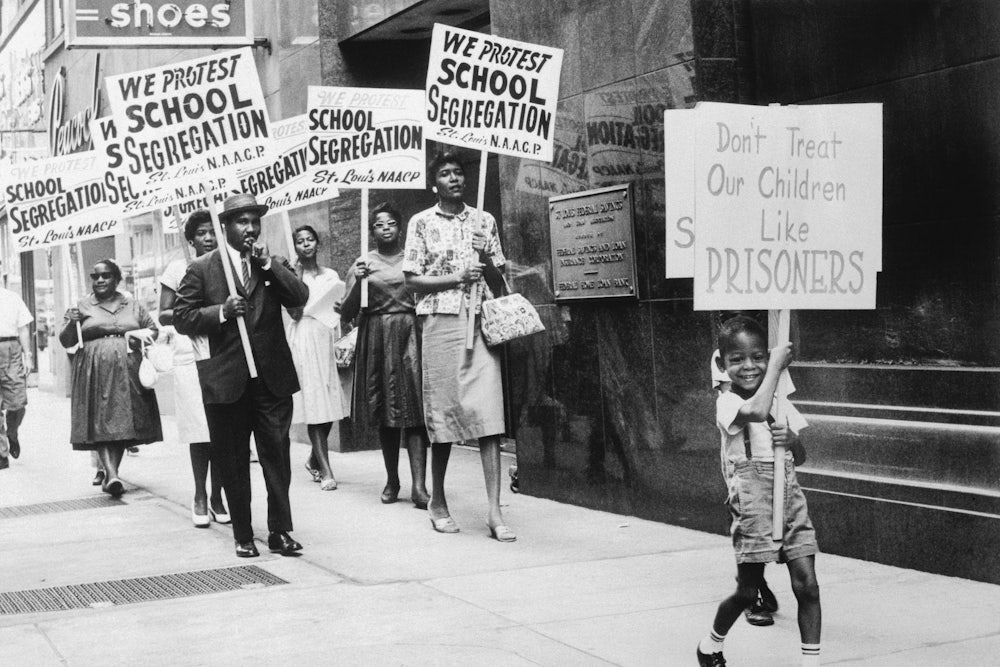On April 19, 1971, the Senate began debate on legislation that had the potential to foster meaningful integration in American schools. The bill was Connecticut Senator Abraham Ribicoff’s baby. He thought that supposedly haphazard, so-called de facto segregation was a myth. Instead, he believed that all segregation was traceable to law or public policy. It was all “de jure.” He explained how governmental officials—through school attendance and districting decisions, zoning determinations, housing policies, school site selection choices and other actions—intentionally segregated the races both educationally and residentially.

Ribicoff’s conclusion has been confirmed many times, most recently by Richard Rothstein in The Color of Law: A Forgotten History of How Our Government Segregated America. But what was the solution? North, east, south, and west, residential and school segregation were deeply entrenched, the result of a dizzying array of state and local rules. Then, as now, most children attended neighborhood schools; if the neighborhoods were segregated, so, too were the schools.
Ribicoff’s bill was one of the single best policy interventions ever introduced to fight segregation. His plan was simple. In exchange for federal education money, state and local education agencies would be required to integrate their schools. But integrating a single school or even a single school district wasn’t enough. Instead, Ribicoff focused on the nation’s roughly 250 Standard Metropolitan Statistical Areas (SMSAs), where a majority of the country’s population lived. Each of these highly interdependent metropolitan regions was composed of any number of school districts, cities, towns, and counties. Under Ribicoff’s proposal, each and every school within an SMSA had to enroll a student body in which no racial minority group fell below fifty percent of its share of the SMSA population as a whole. So, if the SMSA was 30 percent minority, each school within the SMSA needed to achieve at least 15 percent minority enrollment. The carrot for meeting this goal was sizeable: between $20 billion and $25 billion dollars over a twelve-year planning and implementation period. The stick was big, too. If local authorities didn’t comply with the federal mandate, they risked losing all their federal education funds—a penalty few localities would be willing to incur.
Walter Mondale strongly supported Ribicoff’s legislation and fought hard for its passage. The Minnesota senator marshaled persuasive social science evidence in defense of the bill. He pointed to social psychologist Thomas Pettigrew’s work highlighting the potential of “education parks.” The parks, with their large size (12,500 to 15,000 K-12 students), innovative programs and instruction, top-notch facilities, and multiple schools on a single campus, were modeled on the public university. Located on “neutral turf” accessible to both city and suburban students, they were expressly designed as a metropolitan solution for school segregation. At $50 million apiece, they wouldn’t be cheap. But Ribicoff’s bill provided enough money to put at least one park in every SMSA in the nation.
Mondale also cited psychologist Kenneth Clark’s conclusion that school segregation caused profound harm to black and white students. He noted the Kerner Commission’s admonition that the country was moving “toward two societies, one black, one white—separate and unequal.” And he relied on a 1966 study authored by sociologist James Coleman to bolster his assertion that the “racial and socio-economic composition of a classroom is an important and determining factor in educational achievement.” Mondale tried to move his colleagues with data. “Every major report and research study on the consequences of educational disadvantage has concluded that achievement and learning are greatly hindered by minority group isolation,” he told them. “Conversely, clear, positive, and lasting benefits result from education in integrated environments.” But it didn’t work. The bill was soundly defeated two days later.
Fast forward two generations. Demographically, our nation is rapidly becoming more racially heterogeneous. Yet, at the very time when the country needs diverse public education the most, America’s public schools are moving in the opposite direction. School segregation and racial isolation are increasing for all. Black and Latinx students are experiencing the worst of it. On average, they attend schools that are both racially isolated and have higher rates of poverty. Rucker C. Johnson’s new book Children of the Dream: Why School Integration Works (with Alexander Nazaryan) attempts to show that it never had to be this way. And in firing back at opponents of integration, he provides evidence essential for undoing the profound mess in our K-12 schools.
If we already had data as long ago as the 1960s to support the benefits of integration, what does Johnson add that’s new? The answer is that Johnson, a labor economist at the University of California at Berkeley, is look at data that demonstrates the long-term impact of desegregation on children in those areas where it was successfully pursued. Johnson likens his research approach to a clinical trial for a new drug under which a “treatment” group is given the pharmaceutical while a “control” group gets a placebo. Comparing the two groups allows the “researchers to accurately discover what causes what.” He argues that, in effect, the nation ran a “randomized controlled trial” on school desegregation. Some students, in school districts that were under court order to desegregate, got the “treatment” of integration. Other students, in districts not under court order, got the placebo: a segregated education.
Johnson merged the results from a comprehensive database that tracked school desegregation orders by school district, year entered, and type of desegregation plan, with long-term data on the life outcomes of thousands of children who attended school during the desegregation era. He then refined that data with various indicators of school quality, such as per-pupil spending and class size.
His findings are clear. Segregation allowed whites to hoard economic, social, and educational resources. Desegregation had exactly the opposite effect. School districts under court order almost immediately experienced a reduction in black-white segregation, an increase in per-pupil spending and a reduction in class sizes for black children. Black students didn’t need whites to sit next to them to learn. But gaining access to the resources they had—smaller class sizes, more qualified teachers, enhanced support services, increases in instructional time, more counselors and administrators—did wonders. Students who were educated in districts under court-ordered desegregation got a better quality education than those in the control group, which translated into significant educational gains. Their college attendance and completion rates were higher, Johnson writes, “not to mention attendance at more selective colleges.”
“Education is a long game with ever-shifting rules, participants, referees and rewards,” Johnson cautions. “It might take several generations to even see the score.” What he means by “long game” is the time it takes to get the social science right. He cites several researchers who have concluded, based on the persistence of the black-white test score gap, that money doesn’t matter. He pushes back, arguing that our time horizon for evaluating whether a school reform is successful is far too short. Desegregation’s benefits didn’t stop with education. They carried over into almost every aspect of black students’ lives and extended for decades: After entering the workforce, those students experienced increased wages, increased marital stability, reduced incarceration rates, improved health and a reduction in rates of hypertension, cardiovascular disease, and obesity.
And, there is no evidence that white children lost anything because of desegregation. Instead, they gained something invaluable: the ability to develop a rapport with individuals from different backgrounds and the skills necessary to navigate an increasingly complicated world. For instance, a “meta-analysis” of over 500 studies confirmed that intergroup contact—contact between the races—usually reduces prejudice. This is no small thing. Racism is one of our most pressing domestic concerns and, as Sherrilyn Ifill has recently observed in The Washington Post, Russia’s ability to sow racial discord during the 2016 election demonstrates that racism has also become a national security issue.
Marshaling data from across the country, Johnson argues that money (particularly when spent on reducing class size and hiring better teachers) and desegregation need to be deployed in tandem. Desegregation was a huge boon to school resources because it forced school districts to integrate not just the children, but educational services and facilities as well. Integrating teachers, curricular offerings, after-school programs, and public summer school enrichment activities delivered a better quality education to black children. Johnson makes a convincing case that neither desegregation nor school funding reforms alone is sufficient; both are necessary. We have a suite of social policies—integration, early childhood intervention and equitable school funding—that are demonstrably effective. Together they both reduce the racial academic attainment gap and bring us closer to one nation, indivisible.
Johnson is optimistic: He argues that in the area of educational policy we have a clear path forward. But Ribicoff and Mondale had data, too. Johnson refines and updates the work that came before, but he does not refute its central conclusion: that segregation harms all Americans (minorities the most) and that racial integration benefits all Americans (minorities the most). Perhaps, then, there are two kinds of “long game.” The first is to look at integration over a long enough period to carry out worthwhile social science. The second is explicitly political. It is to take the time to convince the public that integration works and should be wholeheartedly pursued. Ribicoff and Mondale played that game in 1971 and lost. We have another shot at it today.
